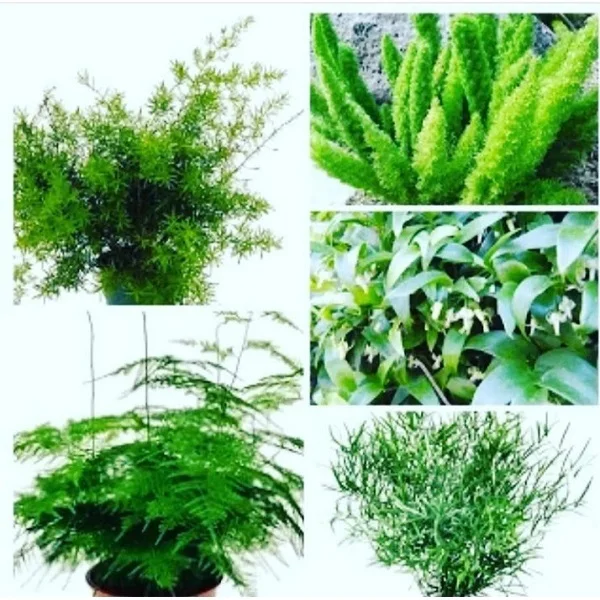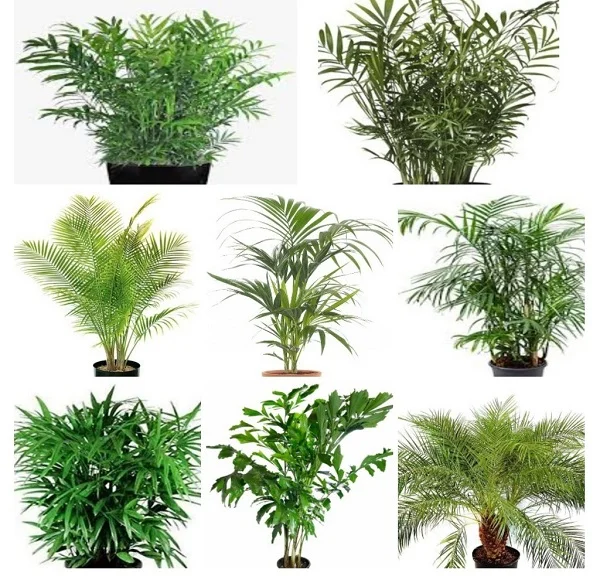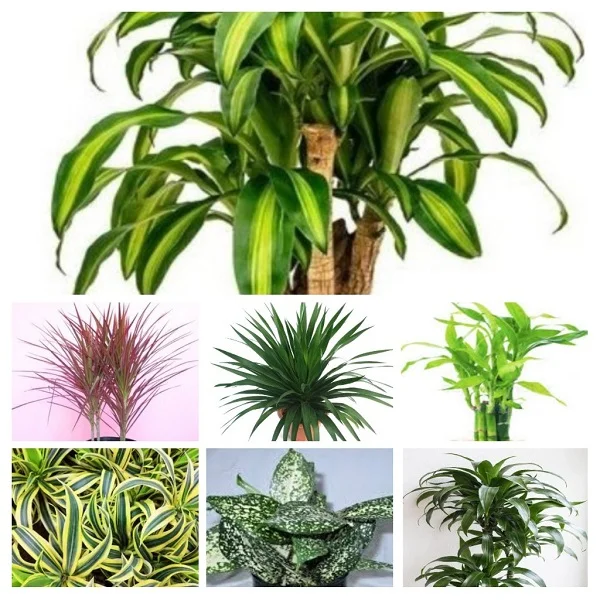7 Types of Popular Fern Plants for Indoors with Pictures and Care Guides
Some links in this post may be affiliate links
Ferns are an interesting way to add greenery to your plant collection. Most of the ferns that are grown indoors are easy to grow and care for. Some ferns produce spores that you may use to multiply your fern plants.
If you are looking to add ferns to your collection, we have herebelow outlined for you 7 of the best Ferns that you can grow successfully.
7 Best Fern Varieties Ideal for Indoors
The best ferns for indoors include Maidenhair Fern, Boston Fern, Holly Fern, Lemon Button Fern, Rabbit's Foot Fern, Staghorn Fern among others.
1. Maidenhair Fern (Adiantum raddianum)
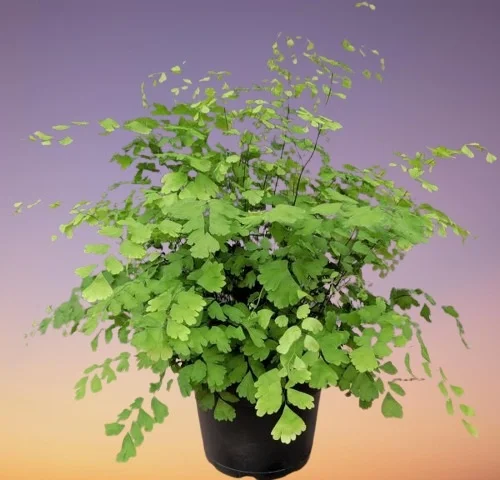
Maidenhair Fern also called Delta Maidenhair Fern bears wiry, shiny, dark stems which resemble human hair. The fronds are semi-erect in young plants but they droop as the plant ages making it perfect for a hanging basket.
Delta Maidenhair Ferns have a high affinity for warm, moist air which places them among the best plants for a closed terrarium or a well-lit bathroom, kitchen, laundry area and other moist areas in the home.
Maidenhair Fern (Adiantum raddianum) prospers in a bright indirect light, average warmth of 18-250C, humidity of 70-80% and consistently moist, fertile, well-drained, all purpose soil coupled with monthly feeding during the growing season.
Learn more on how to grow and care for Maidenhair Fern (Adiantum raddianum)
2. Boston Fern (Nephrolepis exaltata 'Bostoniensis')

Boston Fern is an attractive, hardy fern which bears gracefully arching fronds and leaves which are highly compound whose edges appear slightly serrate.
Boston Fern can be displayed on a pedestal, in a hanging basket, a tabletop, desktop, plant shelf, as a specimen plant or as a part of a grouping. It is one of the best plants for hanging baskets where it can display its beautiful foliage.
Nephrolepis exaltata 'Bostoniensis' flourishes in bright indirect light, average warmth of 15-250C, humidity of 60-70% and consistently moist, rich, well-drained, all purpose potting soil coupled with fortnightly feeding during the growing season.
Read more on how to grow and care for Boston Fern (Nephrolepis exaltata 'Bostoniensis')
3. Lemon Button Fern (Nephrolepis cordifolia 'Duffii')
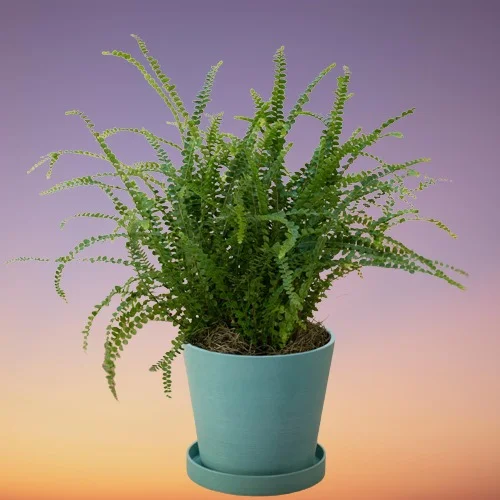
Lemon Button Fern also called Button Sword Fern, Fishbone Fern or Little-leaved Sword Fern is a compact, small-sized, hardy fern with gracefully, drooping stems and small, round, button-like leaves which release a lemony aroma when crushed, hence the common name.
Fishbone Fern can grow to a height of about 1 ft and 1 ft wide. On account of its compact size, Little-leaved Sword Fern is among the best low-light small plants for the limited spaces.
Nephrolepis cordifolia 'Duffii' grows best in bright indirect light, average warmth of 15-250C, humidity of 70-80% and consistently moist, fertile, well-drained, all purpose soil coupled with fortnightly feeding during the growing season.
Learn more on how to grow and care for Lemon Button Fern (Nephrolepis cordifolia 'Duffii')
4. Holly Fern (Cyrtomium falcatum)

Holly Fern also called House Holly-fern or Japanese Holly Fern bears toothed, sharp-tipped, holly-like leaves and tolerates lower light and saline conditions better than most ferns.
Japanese Holly Fern is a compact plant growing to a height of 2 feet and a spread of about 3 feet which places it among the best plants for an office desk without sunlight and other limited spaces.
Cyrtomium falcatum thrives in medium to bright indirect light (dappled light), average warmth of 15-240C, moderate humidity of 50-55% and consistently moist, fertile, well-drained, all purpose soil coupled with monthly feeding during the growing season.
Read more how to grow and care for Holly Fern (Cyrtomium falcatum)
5. Hare's Foot Fern (Davallia canariensis)
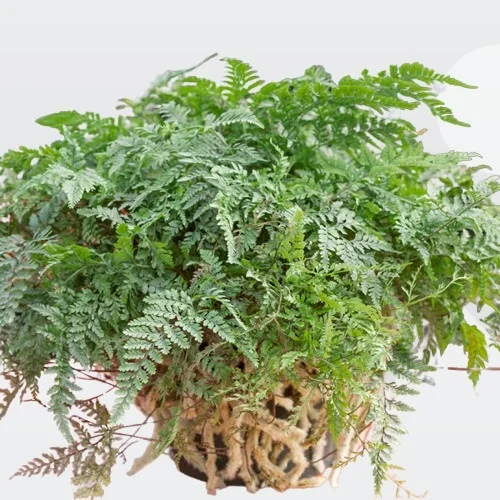
Hare's Foot Fern is grown for its thick, scaly rhizomes which grow over the edge of the pot and resemble a hare's foot making it ideal for a hanging basket where the rhizomes can hang freely for maximum display.
On account of its love for warm and humid conditions, Hare's Foot Fern is one of the best plants for the bathroom where the air is constantly warm and moist.
Davallia canariensis requires bright indirect light (filtered light), average warmth of 21-250C, humidity of 60-70% and consistently moist, fertile, well-drained, all purpose soil coupled with fortnightly feeding during the growing season.
Learn more on how to grow and care for Hare's Foot Fern (Davallia canariensis)
6. Rabbit's Foot Fern (Davallia fejeensis)
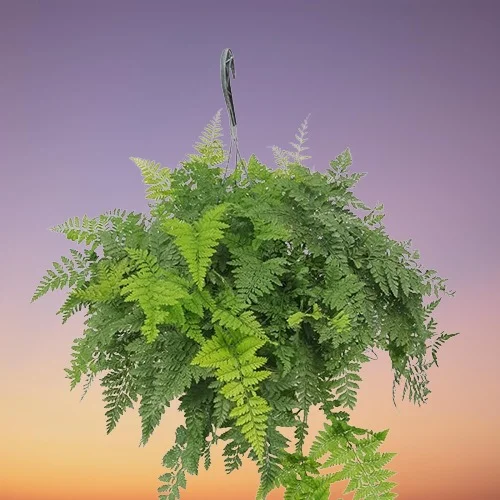
Rabbit's Foot Fern is grown for its furry, brown and yellow rhizomes which absorb moisture and nutients as they crawl and look like a rabbit's foot, hence the common name.
The rhizomes grow over the edge of the pot making it ideal for a hanging basket. The fronds are finely divided, light to dark-green in color and look like carrot tops. These characteristics place Rabbit's Foot Fern among the best plants for an office space where it will create a great first impression.
Davallia fejeensis blossoms in bright indirect light (filtered light), average warmth of 15-240C, humidity of 60-70% and consistently moist, fertile, well-drained, multi-purpose soil coupled with fortnightly feeding during the growing season.
Read more on how to grow and care for Rabbit's Foot Fern (Davallia fejeensis)
7. Staghorn Fern (Platycerium bifurcatum)
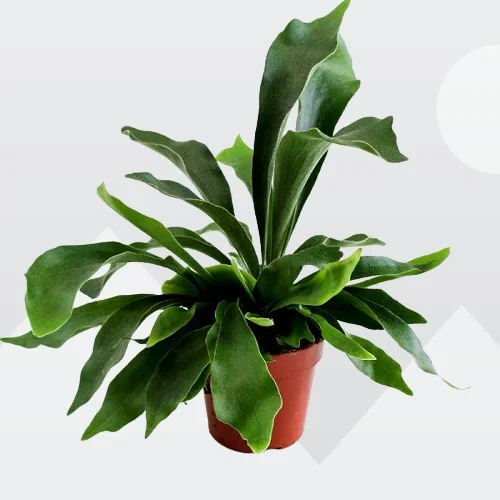
Staghorn Fern also called Antelope Ears or Elkhorn Fern bears large and spectacular fronds which are usually divided at their ends into antler-like lobes, hence the common names.
Elkhorn Fern which can grow to a height of 3 feet and 2.5 feet wide is fun to grow while mounted on a suitable surface or in a hanging basket. It is one of the best plants for the living room where it will be a great conversation starter.
Platycerium bifurcatum prospers in bright indirect light, average warmth of 16-240C, humidity of 50-60% and moderately moist, rich, free-draining, orchids potting mix coupled with monthly feeding during the growing season.
Learn more on how to grow and care for Staghorn Fern (Platycerium bifurcatum)
